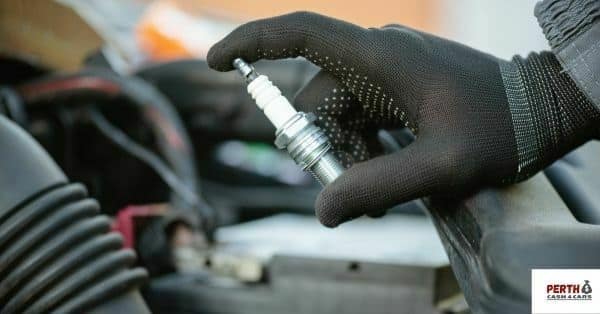Spark plugs are another excellent candidate for DIY replacement, with the metal inevitably burning out over time. Eventually the gap between the electrodes becomes too vast for the spark to actually travel, leading to things like misfires, weak acceleration and poor mileage.
Replacing your spark plugs regularly can help your vehicle run at peak performance, and it can also save you $ in labour costs.
Here’s our DIY guide on how to change your spark plugs.
NOTE. If you have a standard engine, the process is relatively simple. However, some more advanced V-6 and above engines have more difficult spark-plug replacing procedures, so consult a pro if you’re unsure.
- Clear the area. You don’t want crud falling into the cylinders, so use compressed air to ensure there’s no loose dirt around. Remove the ‘vanity’ cover and the air cleaner assembly (label any hoses to ensure you put them back correctly) and ensure the area is clear.
- Remove the ignition coil. First you’ll need to disconnect the electrical connector by either depressing or pulling up the locking tab. You should then be able to rock the connector off the coil before pulling out the entire coil and boot assembly. Some COP systems have a detachable rubber boot and spring; if that’s the case, use some needle-nose pliers to retrieve them. They can then be replaced with new parts.
- Unscrew the main plug. Blow away any additional dirt or crud that’s settled around the plug since installation, and then slide the proper size spark plug socket over the plug (a swivel headed plug socket will make this easier!) before rotating the plug counter-clockwise in order to loosen it. It’s possible that you’ll need an extension to reach the plug, depending on where it is within the engine.
- Measure the gap. A wire-style gap gauge will be enough to make sure you’ve got the size right: you can then slide the correct wire gauge between the electrodes. (The wire should drag slightly between them). If you find the gap is too small, you can use the gap gauge to open it up or tap the side electrode lightly to close it down if it’s too big.
- Secure the new plug. The critical thing with spark plugs is getting the right torque, especially in today’s engines. Ensure that you always use a torque wrench and religiously stick to the torque instructions from the manufacturer. Not reaching sufficient levels mean that the plug can blow right out of the cylinder heads and pull the threads out with it. Using too much, on the other hand, can distort the plug.
- Remember to lube up the spark plug boot. You’ll need to apply a thin coating of dielectric grease around the inside of the spark plug before you re-install the coil. This grease helps to cut down misfires, and it’ll also make it easier to remove the boot in the future.
- Finish up. Re-install the ignition coil, hold-down the bolt and then the coil electrical connector. From there, you’ll be able to re-install the air clear and vanity cover, and fire the car up.
All done!
At Perth Cash 4 Cars, we pay the highest price for any vehicle, at any time throughout Perth. Same day payment & removal guaranteed!
- Cash For Cars Perth
- Car Removal Perth
- Junk Car Buyers Perth
- Cash For Trucks Perth
- Cash For Unwanted Cars
- Car Wreckers Perth
- Car Recycling Perth
If you are in Booragoon and looking for Perth Cash 4 Cars, Contact us now.


